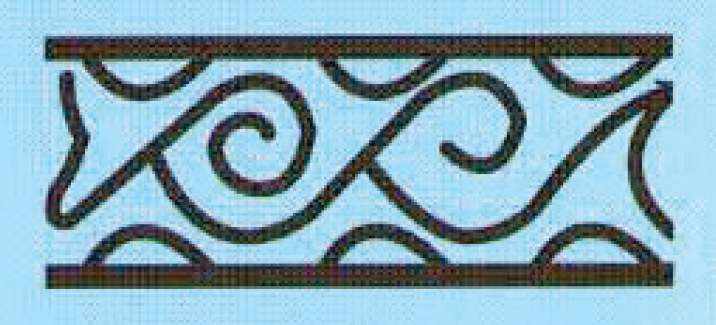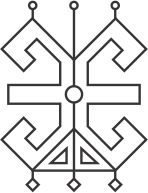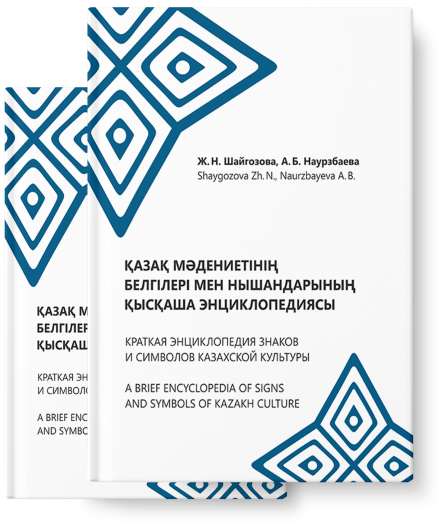
A short encyclopedia of
Signs and symbols of
Kazakh culture

One of the oldest patterns contains the image of a spider. This is apparently related to the analogy of the weaving process as a sacred act of creating a world/fabric/cloth. The spider symbolizes creation, creativity and hard work in almost all traditional cultures. A special place is also occupied by the spider’s web, which symbolizes the universe and destiny.
The most important Hopi myths are those of the Spider Woman, whose scream created the world and caused its demise.

She weaves a web that unites all beings and gives them a common destiny. In ancient Egyptian mythology, the goddess of the North Neyt, who occupied a privileged position in the host of gods, was identified with a spider. The ancient Romans revered the spider as a talisman of good luck and prosperity.
For this reason, embroideries depicting a spider creating the world are quite common in world culture.
In Kazakh culture, the spider is a symbol of weaving and handicrafts, used on the central field of lint-free carpets or on ribbons. Similar to the Kazakh ornament there are also Finno-Ugric peoples (for example, the Udmurt pattern “chonari puzhi” – “spider pattern”), the spider theme is also present in the art of Mongols, Kalmyks, etc., which have the ornament “spider trace”. Graphically, this ornament is an accumulation of chaotic lines used in jewelry art.

